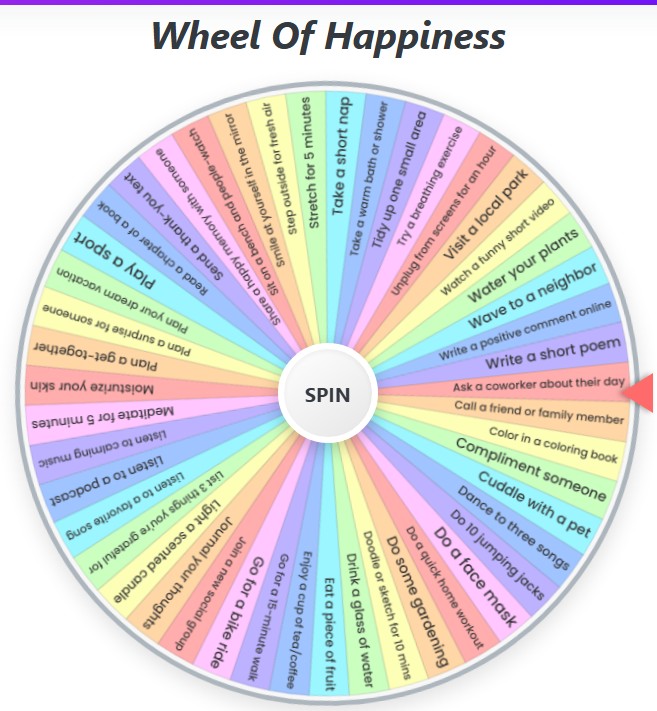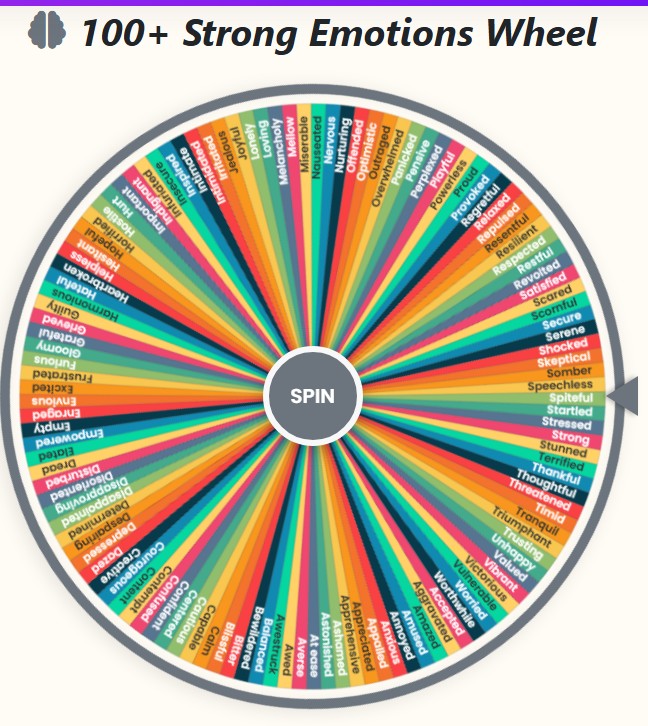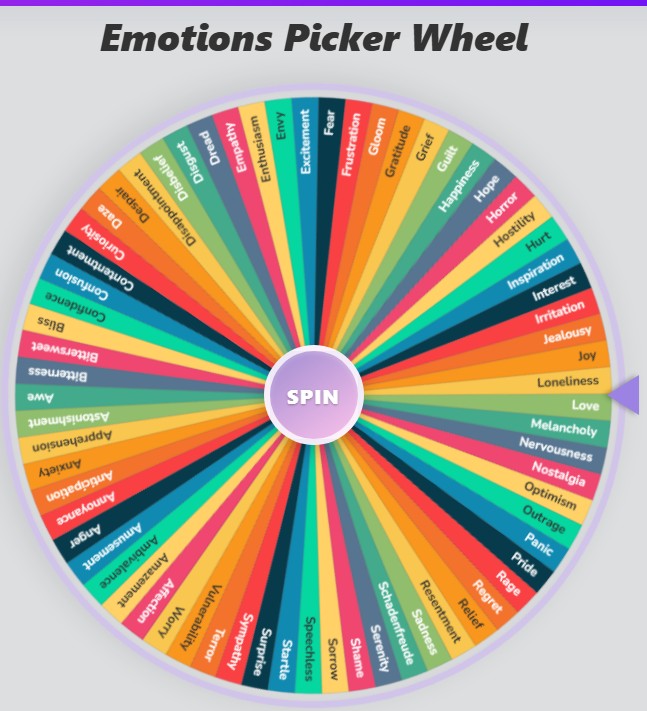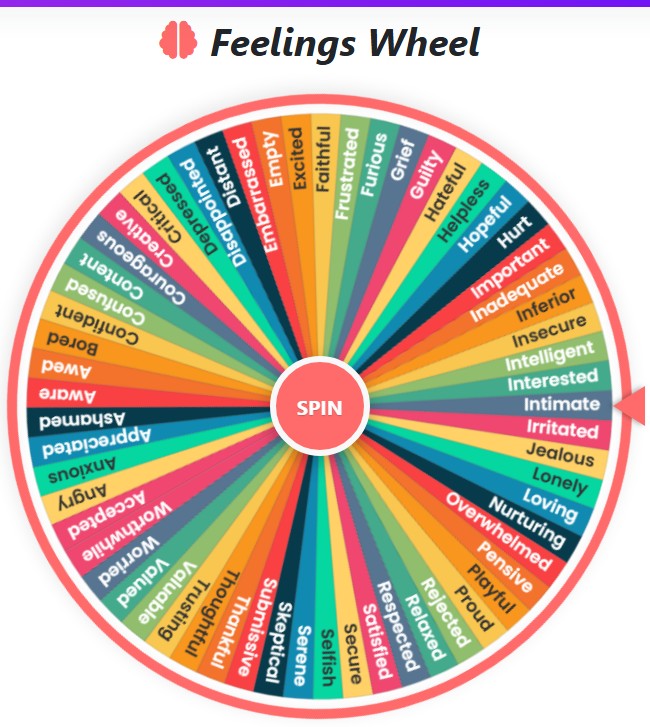5 Love Languages Wheel
Current Mode: None
Quick Link:
- Positive Emotions Wheel
- Sad emotion wheel
- anger emotions wheel
- 60 Feelings Picker Wheel – Spin & Discover
- 70 Emotion Picker Wheel – Spin & Discover Feelings
The Ultimate 5 Love Languages Wheel: Spin to Strengthen Your Connection
Ever feel like you’re speaking a different language than your partner? You bring them a thoughtful gift, but they just wanted a hug. You offer words of praise, but all they really needed was help with the dishes. It’s a common challenge, but what if you could turn this confusion into a fun, interactive game that strengthens your bond? ❤️
Welcome to the 5 Love Languages Wheel! Inspired by Dr. Gary Chapman’s groundbreaking concept, this tool is designed to help you discover and act on the specific ways you and your loved ones feel most appreciated. It’s more than just a quiz; it’s an action generator, a date night planner, and a daily reminder to love better.
Forget the guesswork. It’s time to spin the wheel and start speaking a language of love that truly resonates. Let’s get started!
A Universe of Love: All Ideas on the Wheel
Before we dive into how the tool works, here’s a complete look at all the pre-loaded ideas you’ll find on the wheel, broken down by category. This is the heart of the 5 love language system, filled with actionable ways to show you care.
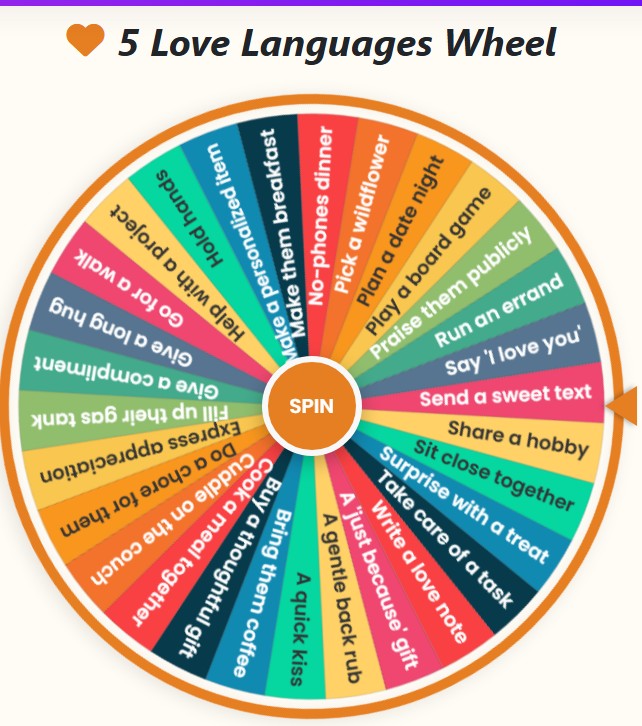
Words of Affirmation
- Give a compliment
- Say ‘I love you’
- Write a love note
- Praise them publicly
- Send a sweet text
- Express appreciation
Acts of Service
- Do a chore for them
- Make them breakfast
- Run an errand
- Help with a project
- Fill up their gas tank
- Take care of a task
Receiving Gifts
- Buy a thoughtful gift
- Pick a wildflower
- Bring them coffee
- Make a personalized item
- Surprise with a treat
- A ‘just because’ gift
Quality Time
- Go for a walk
- Plan a date night
- Cook a meal together
- Play a board game
- No-phones dinner
- Share a hobby
Physical Touch
- Give a long hug
- Hold hands
- A gentle back rub
- Cuddle on the couch
- A quick kiss
- Sit close together
What is the 5 Love Languages Wheel?

At its core, the love language wheel is an interactive digital spinner that takes the five love languages and transforms them from abstract concepts into tangible, everyday actions. We all give and receive love differently, and understanding this is the first step. But the second, more crucial step, is putting that understanding into practice. That’s where this tool shines! ✨
Think of it as a friendly guide that helps you answer the daily question: “How can I show my love today?” Whether you’re in a long-term relationship, a new romance, or even looking to strengthen bonds with family and friends, the wheel provides spontaneous, fun, and meaningful suggestions tailored to each love language. It removes the mental load of trying to come up with ideas and replaces it with the simple, joyful act of spinning a wheel.
Mastering the Wheel: Your Guide to the Controls
The tool is designed to be intuitive, but let’s walk through its features so you can become a pro at spreading the love. The interface is split into two main sections: the wheel itself and the control panel.
The Heart of the Tool: Spinning the Wheel
This is where the magic happens! The large, colorful wheel is the star of the show.
The Wheel: The wheel is divided into segments, with each segment containing a loving action or idea. The colors are vibrant and fun, making the experience visually appealing.
The SPIN Button: Located in the center, this big button is your key to discovery. Click it, and the wheel will burst into a spinning animation, complete with a satisfying clicking sound.
The Result: After a few seconds of anticipation, the wheel will slow to a stop, and the idea pointed to by the marker is your chosen action for the day! A pop-up window will appear, celebrating your result with a shower of digital confetti and clearly stating the winning idea. 🎉
Choosing Your Focus: The Category Selector
Want to focus on a specific love language? This is the section for you. Right below the action buttons, you’ll find the Love Language category card.
Category Buttons: You’ll see buttons for “Words of Affirmation,” “Acts of Service,” “Receiving Gifts,” “Quality Time,” and “Physical Touch.” Clicking one of these will instantly update the love language wheel to only include ideas from that specific category. You’ll even notice the tool’s main accent color changes to match the category you’ve selected!
All Languages Button: This is the default mode. It loads the wheel with a mix of ideas from all five categories, making it perfect for a random surprise or for couples who appreciate all forms of affection.
Item Count: A handy little counter shows you exactly how many ideas are currently on the wheel.
Your Personal Love List: The Ideas Box
This is where you can truly make the tool your own. The “Current Ideas on Wheel” box gives you full control over the content of the spinner.
Add an Idea: Have a specific inside joke or a unique activity your partner loves? Type it into the input box that says “Add a love language idea…” and click the “Add” button. Your custom idea will be instantly added to the wheel. This is perfect for personalizing the experience with things like “Watch our favorite movie” or “Visit the spot where we first met.”
Remove an Idea: Don’t like one of the pre-loaded suggestions? No problem! Each item in the list has a small ‘×’ next to it. Click it to remove that idea from the wheel. The tool will even ask for confirmation if you try to remove the very last item.
Edit an Idea: You can click directly on the text of any idea in the list to edit it. Maybe you want to change “Go for a walk” to “Go for a walk by the lake.” Just click, type, and it’s updated!
The Power-Up Buttons: Fine-Tuning Your Experience
At the very top of the control panel is a row of sleek, powerful action buttons that let you manage your wheel with ease.
Sort A-Z: Click this to instantly arrange all the ideas currently on the wheel in alphabetical order. It’s great for finding a specific item quickly in a long list.
Shuffle: Feeling spontaneous? This button will randomize the order of the items in your list, giving the wheel a fresh feel.
History: Ever wonder what you spun last week? The History button opens a pop-up showing a list of your most recent spin results. You can clear this history at any time.
Color Settings: Love customizing? This opens a settings modal where you can change the entire color palette of the wheel. Choose from options like “Vibrant,” “Pastel,” “Earthy,” and more to match your mood.
Reset All: This is your fresh start button. Clicking it will reset everything to its original state: the wheel will be loaded with all default ideas, the spin count will go back to zero, and your history will be cleared.
Clear All Ideas: This trash can icon within the ideas list box gives you a quick way to empty the wheel completely, allowing you to build a new list from scratch.
Understanding the 5 Signs of Love Language
To get the most out of the wheel, it helps to understand the 5 signs of love language. These signs are the clues that tell you how your partner (or friend, or family member) naturally expresses and receives love. Recognizing them is like being handed a key to their heart.
The Language of Praise: Words of Affirmation
For people whose primary love language is Words of Affirmation, words hold immense power. They feel loved when they hear it.
- Signs to look for: They frequently give compliments and verbal encouragement to others. They light up when you praise them for an accomplishment. A simple, unsolicited “I’m so proud of you” or “You look amazing today” can make their entire day. Conversely, harsh criticism can be devastating to them.
The Language of Support: Acts of Service
For these individuals, actions truly speak louder than words. They feel cherished when you do things for them that make their life easier.
- Signs to look for: They are often the first to volunteer to help others. They show their love by taking care of chores, running errands, or tackling a project. They feel most loved not when you say you’ll help, but when you simply do it. Seeing you’ve already done the dishes or made them coffee is a profound expression of love for them.
The Language of Thoughtfulness: Receiving Gifts
This love language is often misunderstood as being materialistic, but it’s not about the price tag. It’s about the thought and effort behind the gift.
- Signs to look for: They often cherish sentimental items and remember the story behind every gift they’ve received. A gift is a tangible symbol that you were thinking of them. It could be a flower they picked on a walk or their favorite snack you grabbed from the store. It’s the physical proof of your affection that matters.
The Language of Presence: Quality Time
For this person, nothing says “I love you” more than your undivided attention. They want you, and only you, for a period of time.
- Signs to look for: They will often suggest activities to do together and may feel hurt or ignored if you’re on your phone or distracted during your time with them. True quality time for them means putting everything else away, making eye contact, sharing a conversation, or enjoying an activity together. It’s about creating shared memories.
The Language of Connection: Physical Touch
This language is about more than just intimacy. It’s about the security and connection that comes from physical contact.
- Signs to look for: They are naturally “touchy-feely” people. They’ll place a hand on your arm during a conversation, love to hold hands, and are always ready for a hug. A simple, reassuring touch on the shoulder can communicate more than an entire love poem.
Putting It All Into Practice
Now that you understand the tool and the theory, how can you use the love language wheel in your daily life?
- The Daily Spin: Make it a morning ritual. Spin the wheel to get an idea for the day. It’s a simple way to ensure you’re actively nurturing your relationship.
- The Weekly Challenge: At the start of the week, spin the wheel together. The result is your “love challenge” for the week, something you both work on.
- The Date Night Generator: Are you stuck in a date night rut? Load the wheel with custom date ideas (both big and small) and let fate decide your next adventure!
- Breaking a Rut: If you feel like your relationship is on autopilot, use the “All Languages” mode. The random suggestions can help you break out of your routine and discover new ways to connect.
The goal isn’t to perfectly execute every task but to make a consistent, heartfelt effort. The wheel is a prompt, a catalyst for connection. The real love is in the action that follows. Ready to give it a spin? Your next great relationship moment is just a click away! 💖
